17 Jul When poverty makes you sick, a lawyer can be the cure
Tina Rosenberg
Fixes
Fixes looks at solutions to social problems and why they work.
By early summer 2010, the temperature had already reached 100 degrees in Cincinnati. At Cincinnati Children’s Hospital Medical Center, doctors were urging the families of children with asthma to use air-conditioning. One mother handed a piece of paper to her doctor: The child’s room did have a window unit, and she was using it. But then the landlord responded — he apparently didn’t want to pay the electric bills. Use that air-conditioner, the letter said, and you will be evicted.
Where you work, the air you breathe, the state of your housing, what you eat, your levels of stress and your vulnerability to crime, injury and discrimination all affect your health.
A concerned doctor might have tried to call the landlord to fight the notice. Or, she might have handed the letter over to a social worker. But Cincinnati Children’s had something better — it had lawyers. In 2008, the hospital and the Legal Aid Society of Greater Cincinnati set up a medical-legal partnership, the Cincinnati Child Health-Law Partnership or Child HeLP.
A week later, another family came in with the same letter. And the week after that.
“Our lawyers were getting the same problem referred over and over in a short period of time,” said Elaine Fink, who is the co-leader of Child HeLP. “They looked at the map — they were all in the same neighborhood. They looked to see who owned the buildings. In this case we hit bingo — the same owner.”
That was the Brooklyn-based NY Group, which held 18 buildings in Cincinnati and one in Dayton. Many tenants in those buildings had ended up at Child HeLP — to get help with mold, water damage, structural perils, rodents or bug infestations.
Child HeLP wrote to NY Group, including in its letters statements by physicians about the health impacts of its legal violations. It sued on behalf of one severely disabled boy with a tracheotomy whose health depended on air-conditioning. The repairs were done in a few weeks.
But the point was not just to help individual patients — it was to improve conditions in the buildings for all tenants. At the same time, NY Group was walking away from the buildings — Fannie Mae foreclosed on all 19 by the end of July. Legal Aid helped tenants to organize and have a voice in the foreclosure process — among other things, they wanted to make sure that the buildings remain subsidized housing.
Ultimately that pressure resulted in widespread repairs, and helped persuade Fannie Mae to sell the buildings to Community Builders, a Boston-based nonprofit that develops and operates good low-income housing (which is maintaining the subsidies). Reconstruction is about to start.
Being poor can make you sick. Where you work, the air you breathe, the state of your housing, what you eat, your levels of stress and your vulnerability to crime, injury and discrimination all affect your health. These social determinants of health lie outside the reach of doctors and nurses.
In the early 1990s, Barry Zuckerman, the chief of pediatrics at Boston City Hospital (now Boston Medical Center), decided he was tired of seeing kids cycling back into the hospital again and again — asthmatic kids who never got better because of the mold in their houses, infants with breathing problems because their apartments were unheated. He’d write letters to the landlord, who ignored them, said Megan Sandel, who was an intern there at the time. Then at a cocktail party, someone listening to his complaints asked Zuckerman: What does the law say?
Zuckerman thought it was an important question. In 1993, he established the Family Advocacy Program with three lawyers to prod landlords, secure government benefits families were entitled to and fight with Medicaid, insurance companies, schools and other bureaucracies.
(Zuckerman deserves his own wing in medicine’s hall of innovation — he also co-founded Reach Out and Read, which supplies books and encourages doctors to prescribe them and family reading for kids. And he is co-founder of Health Leads, a program that trains college students to connect patients to food, heat and other basics of health.)
There were few medical-legal partnerships until about five or 10 years ago, but now 231 health care institutions have them, according to the National Center for Medical-Legal Partnership. The largest is New York’s LegalHealth, which works in about 20 New York hospitals and is expanding — it will soon have clinics in all 11 of the city’s public hospitals.
Medical-legal partnerships are growing in part because of increasing attention to social determinants of health. Talking about inequality means talking about the vicious cycles that keep people poor; one of the most important is the intersection of poverty and health. “And sometimes a new asthma inhaler isn’t going to solve the problem,” said Martha Bergmark, executive director of Voices for Civil Justice, and until recently director of the Mississippi Center for Justice.
The vast majority of low-income Americans have unresolved legal problems: debt, immigration status, custody issues, child care, benefits, back pay, housing, a special education plan for a child — you name it. All of these affect stress levels, which is in itself a health issue, but many have a more direct connection to health.
Medicaid in New York State is now, in some cases, paying for supportive housing. (Medicaid has long bought housing in the form of nursing homes, of course.) This WNYC radio story describes one formerly homeless woman now in a Medicaid-paid apartment. “You could treat her epilepsy until the cows come home, but without an appropriate place to live she was going to be sick,” said Bergmark.
Clinics that have medical-legal partnerships approach health differently than others. When doctors have no options for helping patients with the social determinants of health, they tend not to ask about them. With a medical-legal partnership, they do. At Cincinnati Children’s, each patient’s family is asked: Do you have housing problems? Problems getting your benefits? Are you depressed? Are you unsafe in your relationship? Would you like to speak to a lawyer or social worker about any of these things?
That process can start right away. “We have attorneys and paralegals on site in the primary care center five days a week,” said Fink. “Many times we get a legal aid attorney to walk down the hall to talk to family while the child is waiting to get immunizations.”
A legal letter can often get a response where a doctor’s or social worker’s letter does not. The lawyers also save doctors time. “Everyone works at the top of their profession instead of the physician figuring out why mom is going to be evicted tomorrow and what they can do about it,” said Ellen Lawton, co-principal investigator at the National Center for Medical-Legal Partnership.
The reverse is also true: adding doctors makes legal work easier. Lawton said that lawyers’ arguments carry more weight when they include a medical opinion. “The health of the kids changes the advocacy conversation,” she said. “It goes from ‘this is the law and you have to comply’ to a conversation that’s about community well-being and health. And when you’re able to use the clinical viewpoint rather than a legal framework, you’re able to resolve the issue much more rapidly.” Most important, a medical-legal partnership goes beyond curing an individual. Child HeLP’s actions in Cincinnati’s sick buildings made life better for all the families there. “Don’t wait for the kids to be sick,” said Sandel, who is now the medical director of the national medical-legal partnership center. “Look for the pattern and find what’s making kids sick in the first place. The power of the model is moving upstream, going from person to person to population level” — legal action as preventive medicine.
Like other forms of preventive care, medical-legal clinics are a bargain. One striking example: New York City’s LegalHealth wrote formal legal demand letters to help adult asthma patients get their apartments cleared of rodents, bugs, mold, water and structural damage. The apartments were fixed. Patients improved, drastically, and there was a 90 percent drop in emergency room visits and hospital admissions. This was achieved by a one-shot intervention that cost an average of $225 per case.
But while society may save money, that’s not necessarily true for hospitals — and it’s hospitals that make the decisions. Fee-for-service medicine rewards hospitals for more admissions and emergency room usage, not less, and doesn’t reimburse hospitals for preventive services such as legal aid. Nor can legal aid lawyers rely on funding from the federal Legal Services Corporation, which never recovered from the Reagan administration’s cuts.
Increasingly, though, hospitals are establishing and paying for medical-legal partnerships, despite the lack of reimbursement. (New York City’s Health and Hospitals Corporation is paying for part of the expansion of LegalHealth, with other major funding from the Robin Hood Foundation, an anti-poverty group.) One reason is the growing move toward value-based reimbursement instead of fee-for-service — for example, Medicare now rewards hospitals for having low rates of readmission and good scores on safety measures. Nonmedical staff members such as social workers — and lawyers — are becoming a better investment.
Kerry J. Rodabaugh, a gynecologic oncologist at the University of Nebraska Medical Center, started a medical-legal partnership at an earlier job at the Roswell Cancer Center in Buffalo. She studied how often lawyers were able to get patients into insurance or benefit programs, which allows hospitals to be reimbursed for their care. She wrote a paper on the partnership’s work and the savings.
At Nebraska, Rodabaugh established a medical-legal partnership in her department.
“In order to get funding for my program I’ve had to prove a financial benefit,” she said. “I’ve been able to document at my current program a 700 percent return on investment since 2009. When I’m talking to administrators they get very excited.” Now U.N.M.C. is expanding these clinics to every department and to its primary care clinics in places with significant poverty.
“So much of child health is the result of poor social and physical living conditions for kids — food on the table, shelter, quality education,” said Robert S. Kahn, a pediatrician at Cincinnati Children’s who is the medical co-leader of Child HeLP. “So much of what we do in pediatrics is driven by these broader well-being issues for the family. We do much better when we partner with groups that have that as a mission.”


